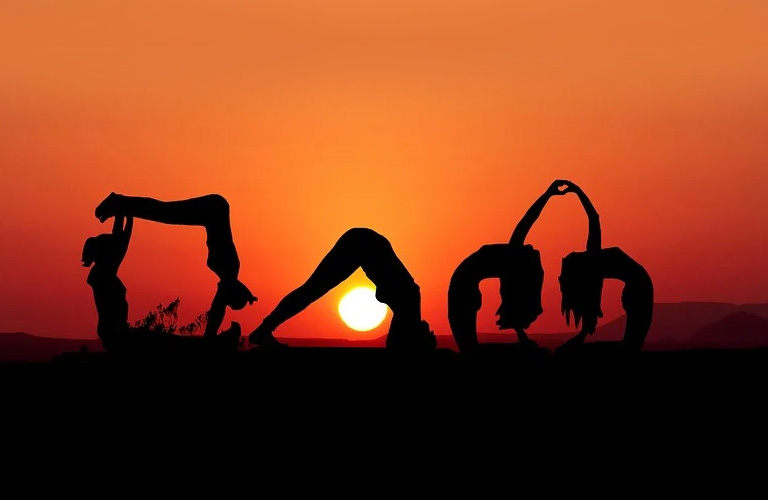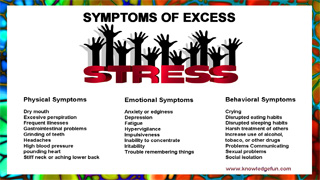Yoga
Yoga is an ancient and complex mind and body practice with historical origins in old Indian philosophy. It began as a spiritual practice but has become popular as a way of promoting physical and mental well-being. Various styles of yoga typically combine physical postures and movement, breathing techniques, and meditation or relaxation.
You can tailor yoga therapy to your individual spiritual and health needs. Yoga is a science of personal growth and represents a process though which one learns how to live life in the most integrated way.
If viewed at therapy level, yoga is a total science of Health and Healing. It offers an excellent training program for the purpose of maintaining health. Yoga comprises a wide range of mind and body practices, ranging from postural and breathing exercises to deep meditation and relaxation. Regular practice of Yoga daily (minimum 30 to 45 minutes), helps not only in developing a physical fitness but also, in preventing the occurrence of many health problems which invariably result from hectic pace of modern life style.
If viewed at spiritual level, yoga differ in method, nature and interpretation of spiritual realization, but all these differences can be considered as creative variations of the basically same fundamental theme, which is designed to lift the individual out of his or her ordinary perception of the world, and help practitioner to achieve point without inner conflict and to live in harmony with the world.
The science of Yoga is divided into several branches. Among the best known and leading divisions are: Hatha Yoga; Raja Yoga; Karma Yoga; Jnana Yoga; Tantra Yoga; Bhakti Yoga. Some branches and schools of Yoga are more religious, implying detailed ceremonies, temple worship, and religious sects; others are more focusing on personal renunciation and meditation.
Although classical yoga also includes other elements, yoga as practiced in the North America typically emphasizes physical postures (asanas), breathing techniques (pranayama), and meditation (dyana). Popular yoga styles such as iyengar, bikram, and hatha yoga focus on these elements.
Yoga and two practices of Chinese origin -- tai chi and qi gong -- are sometimes called “meditative movement” practices. All three practices include both meditative elements and physical ones.
Browse Related Info:
- Breath is Life
- The Creative Will
- Our Friend the Vital Force
- Mind and Body Interventions or Practices
- Hypnosis
- Meditation
- How Meditation May Work
- Acupuncture
- Relaxation Techniques
- Chiropractic Manipulation
- Osteopathic Manipulation
- Tai Chi
- Qi Gong
- CAM Natural Products
- Herbal Remedies
- Wellness and Well-Being
- Health Pages
- Testing Treatments

Did You Know?
Many people practice yoga for health-related reasons, such as for well-being and fitness, to help control stress, or to help manage or prevent a health problem.
Many studies have shown that women were more than twice as likely to practice yoga as men.
Yoga is generally considered a safe form of physical activity for healthy people when it’s done properly, under the guidance of a qualified instructor.
The most common injuries associated with yoga are sprains and strains. Serious injuries are rare. The risk of injury associated with yoga is lower than that for higher impact sports activities.
Yoga is good for children. It can help children learn to self-regulate, focus on the task at hand, and handle problems peacefully. Yoga may also improve balance, relieve tension, and increase strength when practiced regularly.
Yoga is a beneficial intervention for reducing stress and anxiety and improving mental health among adolescents. It is found that school-based yoga programs seem to help improve adolescents’ health. Adolescent student-athletes can also benefit from yoga for both cross-training and preventing overuse injuries.
Modified yoga is an example of a safe exercise that most pregnant women can do as part of their regular physical activity. It’s important, however, that a pregnant woman first be evaluated by her obstetrician or other health care team member to ensure that exercise and modified yoga are safe for her.
In addition to yoga’s benefits as general physical activity, yoga during pregnancy can help reduce stress, improve flexibility, and encourage focused breathing. Research shows that yoga may also help pregnant women who suffer from anxiety, depression, stress, low-back pain, or sleep disturbances.
Yoga’s popularity among older people is growing. Yoga might protect the brain against the decrease in the amount of gray matter that usually occurs as people grow older.
It is good to practice yoga for better health and joyful living.
Tips on How to Reduce Risk of Injury When Practicing Yoga
Yoga is generally considered a safe, but it’s possible to get hurt practicing yoga. So, start slowly and learn the basics first.
Choose a class that’s appropriate for your level. If you’re not sure, ask the yoga teacher.
As a beginner, you may want to avoid challenging practices such as headstands, shoulder stands, the lotus position, and forceful breathing. Or, if you do try them, engage in them gently, gradually, and with great care.
Don’t push yourself beyond your comfort level. If you can’t do a pose, ask your teacher to help you modify it. If you feel pain or fatigue, stop and rest.
Learn about the precautions you need to take if you try a “hot yoga” practice (e.g., Bikram yoga). This form of yoga has special risks related to overheating and dehydration.
If you have a health condition, if you’re an older person, or if you’re pregnant, discuss your needs with your health care providers and your yoga instructor. You may need to modify or avoid some yoga poses and practices. For example, if you have a condition that weakens your bones, you’ll need to avoid forceful forms of yoga. If you have glaucoma, you’ll need to avoid upside-down positions.
Older people are at increased risk of developing strains and sprains when doing yoga, so they may need to modify or avoid some poses and movements to prevent injury.
Older adults who practice yoga should put safety first. It’s a good idea to start with an appropriate yoga class—such as one called gentle yoga or seniors yoga—to get individualized advice and learn correct form.
Chair yoga is an even gentler option for seniors with limited mobility. And it’s important for older people with medical issues to talk to both their health care providers and the yoga teacher before starting yoga.
Certain conditions and complications make yoga exercise unsafe for some women during pregnancy. So it’s essential that pregnant women be carefully evaluated before exercise recommendations are made.





